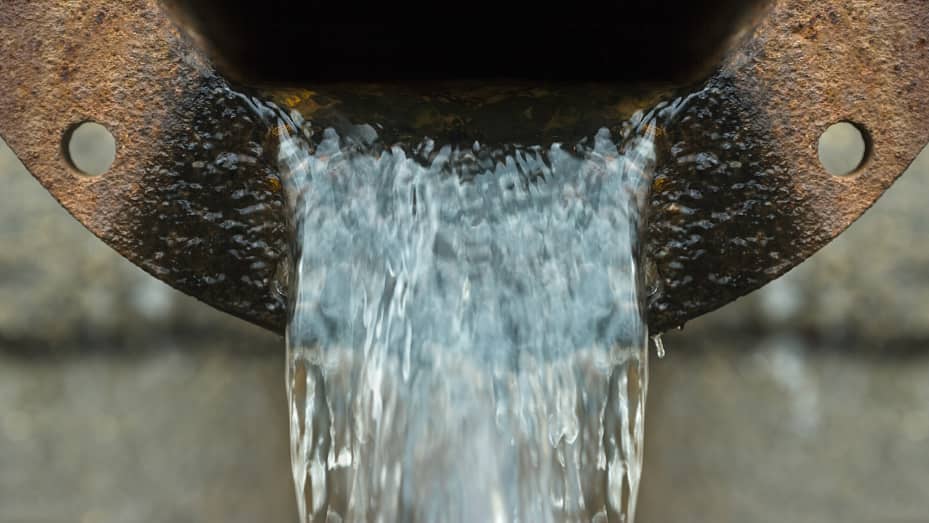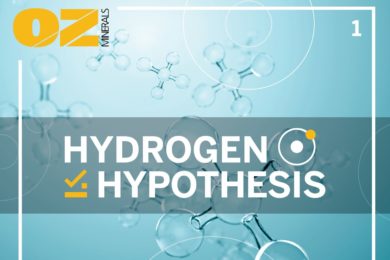PUBLISHED WED, AUG 25 2021
Anmar Frangoul
KEY POINTS
Water Research Australia says the project will aim to “address the challenge of water scarcity in the process of hydrogen production.”

Bluberries | iStock | Getty Images
Researchers in Australia are to work with utilities and investigate using wastewater in hydrogen production in a bid to boost its sustainability and maximize resources.
The project will see a team from Monash University in Melbourne work with four companies through Water Research Australia: Yarra Valley Water, Melbourne Water, Southeast Water and Water Corporation.
Described by the International Energy Agency as a “versatile energy carrier”, hydrogen has a diverse range of applications and can be deployed in sectors such as industry and transport.
It can be produced in a number of ways. One method includes using electrolysis, with an electric current splitting water into oxygen and hydrogen. If the electricity used in this process comes from a renewable source, such as wind or solar, then some call it “green” or “renewable” hydrogen.
In an announcement dated Monday – Monash University released the same statement last week – Water Research Australia said the project would aim to “address the challenge of water scarcity in the process of hydrogen production.”
This would be done through “developing an innovative approach which repurposes used water as the feed for hydrogen production via water electrolysis.”
Among those commenting on the project was Xiwang Zhang, a chemical engineering professor at Monash University.
“The amount of wastewater currently available for use is far more than the amount of water required in water electrolysis for hydrogen production,” he said.
Most treated water in Australia was, he explained, either being “discharged to surrounding water bodies or recycled for irrigation after being treated in centralised municipal wastewater treatment plants.”
“Given that the volume of the treated water from these plants is highly consistent, it is a promising water source for water electrolysis,” he said.
The idea of using waste to produce hydrogen is not unique to the project in Australia.
In March, for example, Coventry University said its researchers were working with water firm Severn Trent and the Organics Group on a project to “turn sewage waste into a clean fuel for tankers and other vehicles.”
“Severn Trent currently destroys the waste ammonia present in sewage due to its toxic properties but this programme of work could see it captured and converted into hydrogen,” the U.K.-based university said.
Currently, the vast majority of hydrogen generation is based on fossil fuels, and green hydrogen is expensive to produce. Australia’s government says it wants to grow its hydrogen industry and produce “clean” hydrogen at under 2 Australian dollars ($1.45) per kilogram.
Earlier this month, U.K. oil and gas giant BP said “the production of green hydrogen and green ammonia using renewable energy” was now technically feasible at scale in Australia.
The energy major’s conclusion was based on the findings of a feasibility study announced in May 2020 and supported by the Australian Renewable Energy Agency, solar developer Lightsource bp and professional services firm GHD Advisory.
In a statement, BP described the vast state of Western Australia as being “an ideal place” for the development of “large scale renewable energy assets that can in turn produce green hydrogen and/or green ammonia for domestic and export markets.”
OZ Minerals invests in seven hydrogen
experiments as part of Hydrogen Hypothesis
challenge
As part of the Hydrogen Hypothesis challenge, seven teams have been selected to take part in the OZ Minerals’ Think & Act Differently (TAD) accelerator program.
The focus of the challenge, launched at the end of March, was to identify experiments that can demonstrate the safe and effective use of hydrogen in a mining context, with the aim of providing OZ Minerals insight into how hydrogen can be used to support zero or low carbon processes.
It was underlined by the miner’s strategic aspiration to eliminate Scope 1 emissions and strive to systematically reduce Scope 2 and 3 emissions across its value chain.
There were 158 participants in the OZ Minerals and Unearthed Hydrogen Hypothesis challenge, from 35 countries.
Brett Triffett, OZ Minerals’ Transformation Technologist, said: “The mining sector has the opportunity to leverage the progress made in other sectors and explore the use of hydrogen technology in its operations.
“The finalist teams were chosen because they have proposed ideas that have the potential to demonstrate the value hydrogen technologies and applications could create for our industry.
“These teams also demonstrated their willingness to work and learn together with each other and OZ Minerals. The OZ Minerals TAD incubator acceleration program is designed to create as much mutual value as we possibly can, rather than just transacting an experiment for funding.”
The program, according to Triffett, includes frequent capability uplift sessions on a range of topics so participants come out with something more than just a funded experiment.
“Many of the finalist teams are not from the mining industry and are keen to learn more about how the industry works,” he added.
These insights are embedded through regular insights panels with members of OZ Minerals’ broad ecosystem. They also come together with a technical mentor to gain valuable feedback on the technical aspects of their work with one another.
The teams selected are
- Avid Group (Aaron Teo) – Hydrogen powered lighting towers;
- Carbon 280 (Mark Rheinlander) – Hydrilyte storage system – safe hydrogen transport and storage at atmospheric temperature and pressure;
- Carnot (Francis Lempp) – Ultra efficient ceramic engine;
- Fly H2 Aerospace (Mark Van Wyk) – Hydrogen-powered drone;
- OZ Minerals (Steve Day) – Hydrogen highway;
- Supercritical (Luke Tan) – High pressure electrolyser; and
- Yakum Consulting/Queens University (Yeonuk Choi) – Produce clean metal products from concentrate using green hydrogen.
Rio Tinto studies hydrogen production
with Japan’s Sumitomo Corp
August 27, 2021

Image by OpenClipart-Vectors from Pixabay
Australian global mining giant Rio Tinto has partnered with Sumitomo, a Japanese energy company, to explore hydrogen production and use at its Yarwun alumina refinery in Gladstone, Australia.
Sumitomo has been conducting a study on hydrogen production in Gladstone and, with the letter of intent signed with Rio Tinto, will apply its findings to conduct a pilot at the refinery.
The pilot will be implemented as part of the Gladstone Hydrogen Ecosystem, an initiative established by Sumitomo in partnership with academia, government agencies, and utilities to develop Gladstone as a hub for hydrogen production for the global market by 2030.
Parties Sumitomo collaborated with include Gladstone Ports Corporation, Gladstone Regional Council, Australian Gas Networks and CQUniversity Australia.
The announcement follows bp releasing a study confirming that large-scale production of green hydrogen and ammonia is technically feasible in Australia.
Commenting on the partnership with Sumitomo, Kellie Parker, chief executive at Rio Tinto, said his company is expanding its partnership with the Japanese company “to explore the possibilities of hydrogen, not only for our own refinery but for Sumitomo to supply industry more broadly in Gladstone.
“Reducing the carbon intensity of our alumina production will be key to meeting our 2030 and 2050 climate targets. There is clearly more work to be done, but partnerships and projects like this are an important part of helping us get there.”
The increased adoption of hydrogen in Australia will help strengthen the countries economy through the export of energy and will ensure a secure energy supply to meet local demand, whilst reducing carbon emissions.
Thousands of jobs are expected to be created by expanding Australian hydrogen capabilities. Collaboration with international companies is expected to help accelerate the growth of the market.
Sumitomo is also expanding its portfolio of green projects by deploying hydrogen initiatives to achieve the 2050 carbon neutrality goal.
Sumitomo Corporation’s Energy Innovation Initiative Director, Hajime Mori, added: “Sumitomo has commenced the Design Study and Preliminary Master Planning to build the Gladstone hydrogen ecosystem and we will continue to work towards future hydrogen exports from Gladstone.”
Minister for Water Glenn Butcher, reiterated: “Gladstone’s world-class deep water port, water security through Awoonga Dam, and industry attraction via the local State Development Area have set Gladstone up to become the hydrogen capital of Australia, providing massive employment and supply chain opportunities both locally and in the Central Queensland region.”

No comments:
Post a Comment